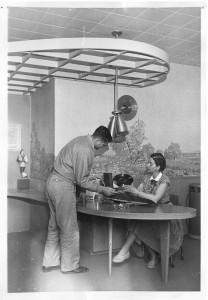Posted by Susan on Wednesday, Jul 30, 2014

Every year I look at the end of the year (fiscal year ends June 30) circulation reports with a lot of interest. I am always intrigued by what’s “hot” and what’s not. Tastes change, availability changes and how people use collections reflects those changes.
An interesting case is that of music. Funded by a $14,000 bequest, the Library opened a state of the art music room in 1950. People could select an LP record and take it to the staff who would put it on the Magnavox Windsor Imperial record player – no individual listening stations, everyone in the room heard your selection.
The music room closed in 1961 “due to an increase in the number of home phonographs and the drop in the price of hi-fi sets and LP phonograph records,” so the library was loaning records instead of providing in-house listening. In the early 1990s, LP records were replaced as the preferred format by compact discs. In recent years, the compact disc is losing out to electronic formats and the Library is restricted from sharing many of the most popular recordings with library users.
We have noticed a large increase of music CD donations as people building their online collections donate their physical ones. Our Local Music Project is one way we can share music in new formats and we are investigating others, but the era when recorded music exists as a physical thing may be ending. Still, the music compact disc collection remains a steady source of entertainment to many.
Magazines are another area where formats have changed significantly in recent years. We circulated just over 22,000 magazines last year, almost evenly divided between print and downloads. Five years ago we checked out 16,000 magazines, all print. Overall, our magazine collection is geared more to popular interests than research oriented. The research material is now available on the internet.
One area of increase, as expected, was downloads of electronic books which grew by 22 percent in the last year. At 46,964 our circulation of electronic books is still dwarfed by our physical book circulation of 763,328.
A community survey completed in FY14 shows that people still rely heavily on the Library for materials in all formats – 76.7 percent of all those surveyed said they checked out materials during their last visit. The same survey revealed that, on average, Iowa Citians read twice as many books (24) per person in a year than the average for the country as a whole. That kind of readership keeps our collection fresh as we do our best to keep up with the changing interests.

